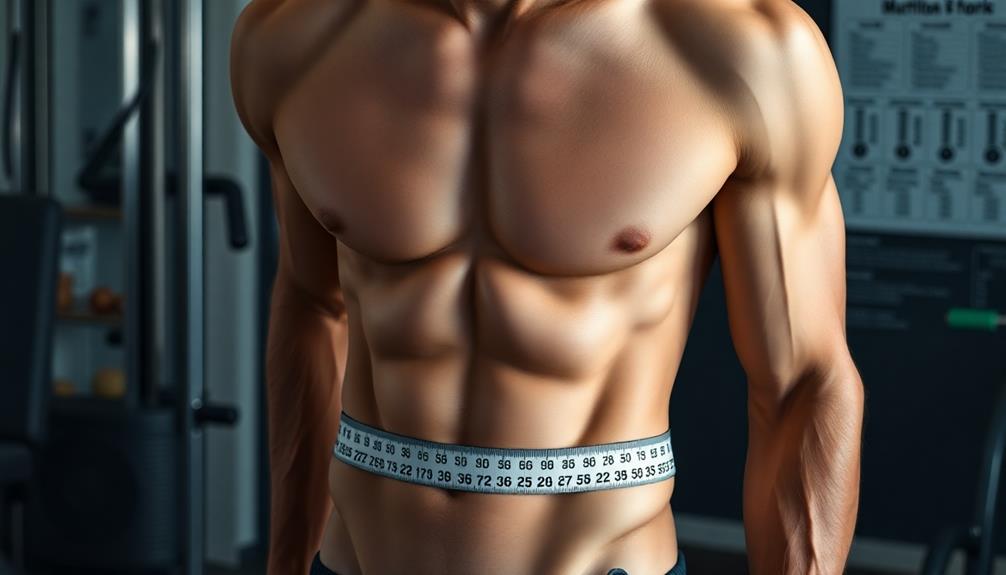When cutting, your best body fat percentage depends on your gender and goals. For men, aim for 10-20% body fat, with 10-14% giving you an athletic look. Women should target 14-24%, with most feeling their best between 18-22%. These ranges allow for fat loss while maintaining essential body functions. Remember, body fat is essential for hormone production and energy storage. Aim to lose 0.5-1% body fat per week for healthy, sustainable results. Adjust your diet and exercise routine to support your cutting goals, and consider supplements to help preserve muscle mass. Discover how to effectively measure and manage your body fat for best cutting results.
Core Insight
- Men should aim for 10-20% body fat when cutting, while women should target 14-24%.
- For an athletic look, men should target 10-14% body fat, and women 18-22%.
- Losing 0.5-1% body fat per week is considered a healthy and sustainable rate for cutting.
- Ideal body fat percentage varies based on individual fitness goals, age, and genetics.
- Proper diet, exercise, and consistency are crucial for achieving and maintaining ideal cutting percentages.
Understanding Body Fat Percentage
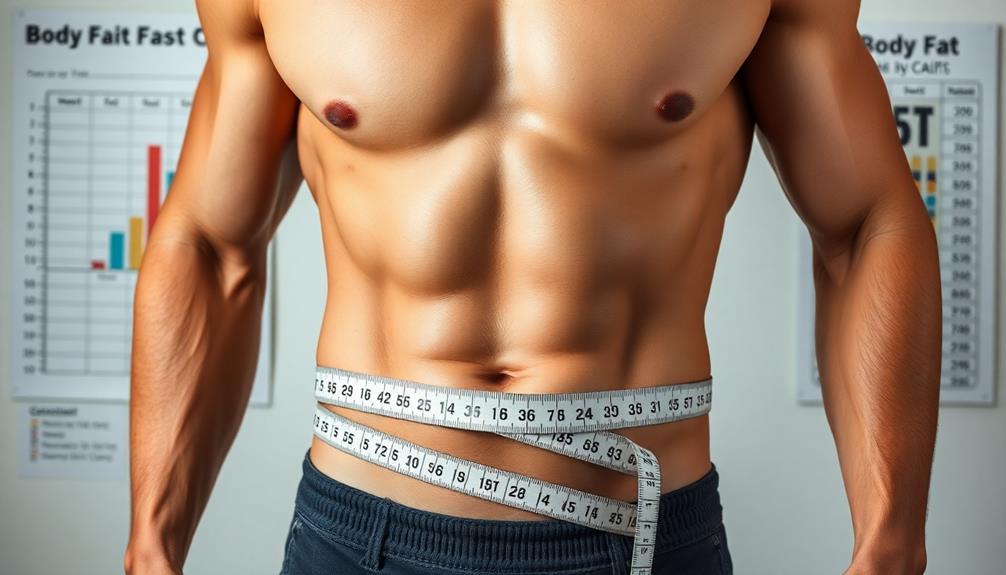
Body fat percentage tells you how much of your body weight is fat. It's a better way to measure your fitness than just your weight because it considers your body composition. You can measure your body fat percentage in different ways, like using calipers or special machines. Each method has its pros and cons, but they all try to estimate how much fat you have.
Some body fat is needed for your body to work properly. The amount of essential fat is different for men and women. Men need about 2-5% essential fat, while women need 10-13%. Any fat above these amounts is considered non-essential fat.
Health Implications of Body Fat

Body fat is important for your health. It helps make hormones, keeps you warm, and stores energy. But having too much or too little body fat can cause health problems. Knowing about this can help you decide on your fitness goals.
Here's a simple chart showing body fat percentages and what they mean for health:
| Body Fat % (Men) | Body Fat % (Women) | Health Meaning |
|---|---|---|
| Less than 5% | Less than 15% | Very underfat |
| 5-10% | 15-20% | Athletic |
| 10-20% | 20-30% | Healthy |
| 20-25% | 30-35% | Overweight |
| More than 25% | More than 35% | Obese |
Keeping a healthy body fat percentage can lower your chance of getting heart disease, diabetes, and some cancers. Talk to your doctor to find out the best body fat percentage for you based on your health and goals.
Cutting vs. Bulking Explained

Cutting and bulking are two different ways to change your body.
When you cut, you eat less food than usual. This helps you lose fat but keep your muscle. You'll eat lots of protein and not many carbs. Cutting makes your muscles show more.
Bulking is when you eat more food than normal. This is to help you gain muscle. You'll eat a lot of protein and carbs. You might gain some fat too.
For both, you need to plan well and stick to your workout plan. Change your diet and exercise based on if you're cutting or bulking. The most important thing is to stay consistent and be patient.
Ideal Ranges for Men
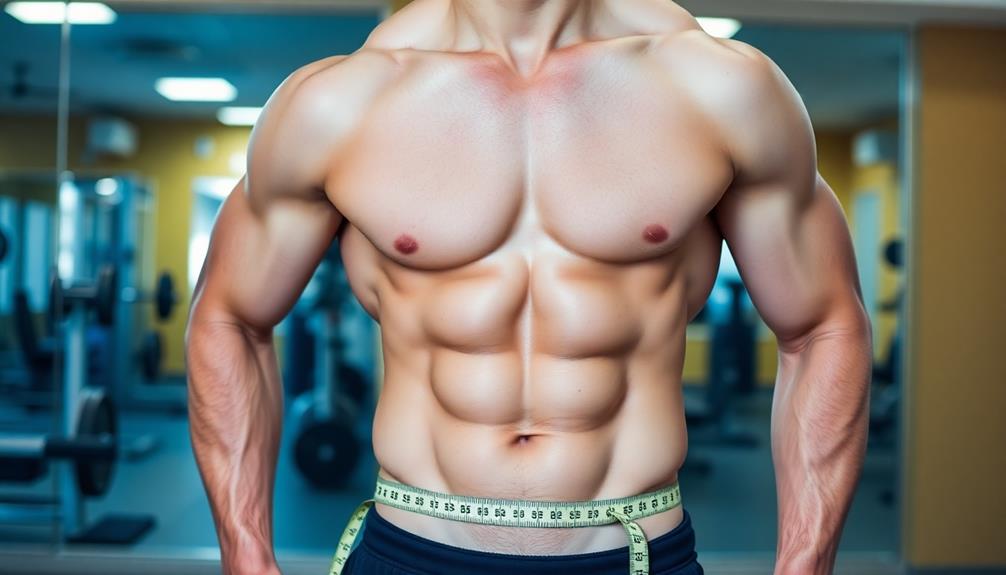
When cutting, men should aim for a body fat percentage between 10-20%. If you're over 20%, focus on reaching this range first. For most men, 15-17% body fat is healthy and allows for visible muscle definition. Keto supplements can help you reach and maintain your ideal body fat percentage while keeping muscle mass.
If you want an athletic look, go for 10-14% body fat. This will show off muscle striations and vascularity, but it can be hard to maintain this level and may affect your health and performance.
Competitive bodybuilders or those who want an extremely lean physique should aim for 6-9% body fat. This range is usually not sustainable for long periods and should only be attempted with professional guidance.
Optimal Percentages for Women

Women naturally have higher body fat percentages than men. For cutting, women should aim for 14% to 24% body fat. At 14%, you'll look lean and muscular. But it can be hard to stay under 14% and may cause hormone issues. Supplements like CLA and L-Carnitine might help you reach and keep your ideal body fat while cutting.
Most women feel best between 18% and 22% body fat. You'll have some muscle definition but still be healthy. When cutting, try to lose 0.5% to 1% of your body fat each week. Your perfect percentage depends on your age, genes, and goals.
Athletes and Body Fat Targets
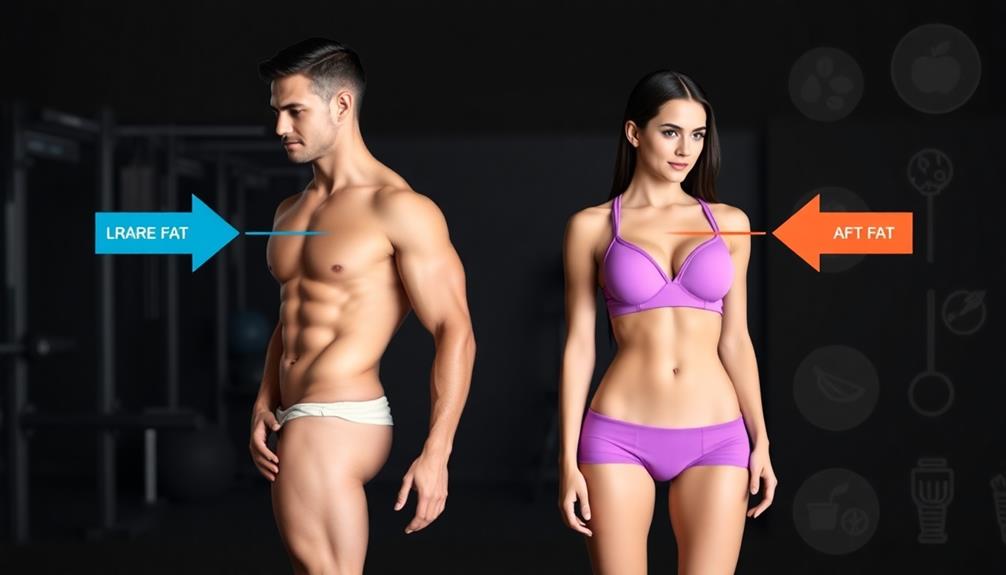
Athletes often try to achieve specific body fat percentages based on their sport. These targets differ depending on what the sport requires. For instance, marathon runners usually have lower body fat than shot-putters. Supplements like BCAAs can help athletes recover and keep muscle during periods of weight loss, making it easier to reach their desired body fat levels.
When thinking about body fat goals for athletes, remember:
- Sprinters and gymnasts frequently target 6-12% for men and 10-16% for women
- Swimmers and rowers might aim for 8-15% for men and 12-20% for women
- Team sport athletes commonly maintain 10-18% for men and 15-23% for women
- Strength athletes such as powerlifters may keep their body fat at 12-20% for men and 18-25% for women
These ranges serve as general guidance. The best body fat percentage for you will depend on your unique body, performance objectives, and overall wellness. Talk to a sports nutritionist or coach to figure out the most appropriate target for your specific situation.
Methods to Measure Body Fat

Measuring body fat accurately is important for reaching your fitness goals. You have several options, each with different levels of accuracy and ease of use. Here's how some common methods compare:
| Method | Accuracy | Ease of Use | Cost |
|---|---|---|---|
| DEXA Scan | High | Harder | High |
| Underwater Weighing | High | Harder | Medium |
| Skinfold Calipers | Medium | Easier | Low |
| Bioelectrical Impedance | Low-Medium | Easiest | Low-Medium |
DEXA scans and underwater weighing are the most accurate but need special equipment. Skinfold calipers are often used by trainers and are fairly accurate and easy to use. Bioelectrical impedance devices, like some bathroom scales, are the easiest to use but can be thrown off by things like how hydrated you are. When picking a method, think about your budget, how accurate you need it to be, and how often you'll be measuring.
Strategies for Effective Cutting
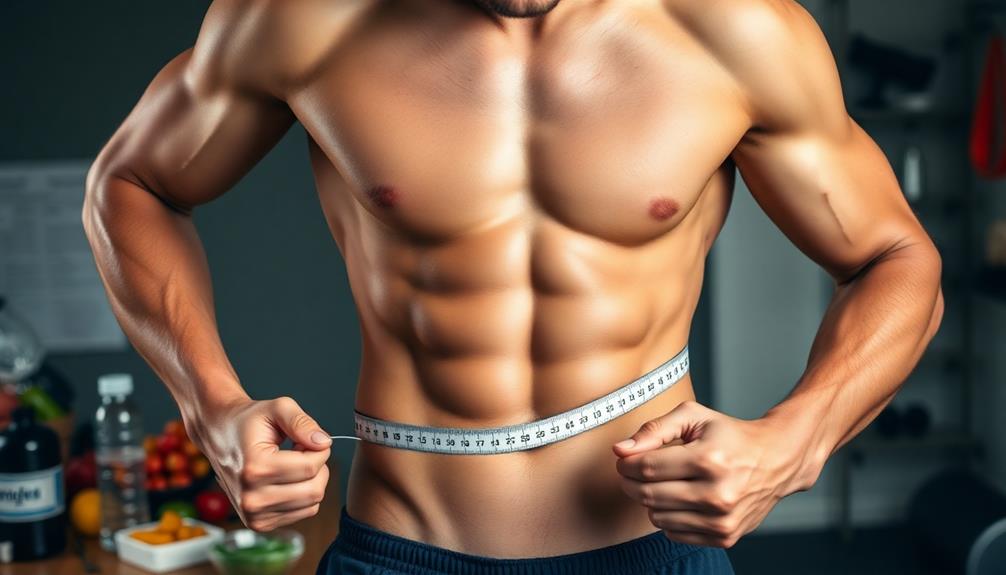
Cutting body fat while keeping muscle isn't easy, but it can be done. To pull it off, you need to eat fewer calories than you burn. This is called a calorie deficit. Aim to reduce your daily calories by 10-20% below what you normally eat to maintain your weight.
When cutting, it's important to eat healthy, filling foods. Think lean proteins, veggies, and complex carbs. These nutrients will help you feel full and energized, even when eating less.
Strength training is key during a cut. Lifting weights preserves muscle mass and keeps your metabolism fired up. Low-carb protein shakes are a great way to fuel up after workouts or replace a meal when you're busy.
Top cutting tips:
- Prep meals ahead of time with lots of protein and color
- Weigh your food and track macros with an app
- Focus on big lifts like squats and deadlifts
- Add HIIT cardio to burn extra calories
Cutting takes time and consistency, but stick with it. With hard work and smart strategies, you'll get the results you're after.
Maintaining Performance While Cutting

Cutting calories can affect your gym performance, but you can take steps to maintain your strength and endurance:
- Eat plenty of protein to maintain muscle. Protein capsules may help support muscle during cutting.
- Eat carbs before and after workouts for energy.
- Drink lots of water for performance and recovery.
- Do fewer sets and reps, but keep lifting heavy.
- Get enough sleep to avoid burnout.
- Creatine or caffeine supplements may boost performance.
- Keep track of your lifts and adjust as needed.
Frequently Asked Questions
How Long Does It Typically Take to Reduce Body Fat by 1%?
You'll typically need about 1-2 weeks to reduce body fat by 1%, depending on your diet and exercise routine. It's not an exact science, though. Your starting point, metabolism, and consistency all play essential roles.
Can Supplements Help Accelerate Fat Loss During a Cutting Phase?
While supplements can support your cutting efforts, they're not magic bullets. You'll see better results by focusing on a balanced diet, consistent exercise, and proper sleep. Some supplements may offer slight advantages, but they're not essential for success.
Is It Possible to Target Fat Loss in Specific Areas of the Body?
You can't specifically target fat loss in certain areas. Your body decides where to lose fat based on genetics and hormones. Instead, focus on overall fat loss through a balanced diet and exercise routine for best results.
How Often Should I Adjust My Calorie Intake During a Cutting Phase?
You should adjust your calorie intake every 2-4 weeks during a cutting phase. Monitor your progress closely and make small, incremental changes. If you're not seeing results, reduce calories slightly. If you're losing too quickly, increase them.
What Are the Signs That Indicate I've Reached My Ideal Body Fat Percentage?
You'll notice visible ab definition, muscle striations, and vascularity. You'll feel energetic and strong. Your clothes will fit better. Remember, ideal body fat varies by individual goals and genetics. Consult a professional for personalized guidance.

